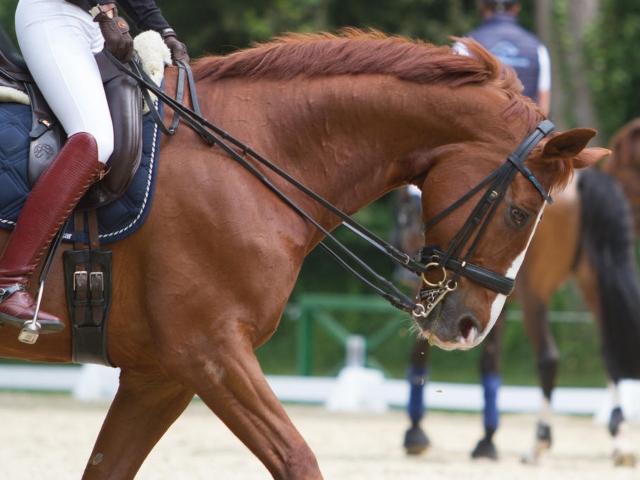[imagesource:deviantart]
Following Charlotte Dujardin’s Olympic exit and ban for whipping the hell out of her horse during Olympic training, animal rights groups are now asking where the line is between training and abuse.
The line seems to be an elusive one as whips, spurs, nosebands, bits and bridles are used by riders around the world, none of which can really be deemed ‘harmless’.
Dujardin was regretful following the leaked video of her ‘training’, saying:
“What happened was completely out of character and does not reflect how I train my horses or coach my pupils, however there is no excuse. I am deeply ashamed and should have set a better example in that moment.”
Horse trainers are quick to point out that their work with the horses cannot be summed up in one unfortunate video, and that they understand what is needed to train the horses. They will also argue that the horse, pretty quickly, will tell you what it wants and that it’s a foolish trainer who tries to dominate rather than work with one of these animals.
South African eventer, Sarah Arnot Mulhern, believes in the bond between rider and horse, saying “We have been riding and training horses for at least 4,000 years, one of the earliest descriptions of training horses comes from Xenophon [The Art of Horsemanship] in 355 BC.”
“You could not get an animal that weighs 500 to 600 kilos to do something it doesn’t want to. That’s why we don’t ride zebras. They don’t want to be trained. With horses, we develop this incredible bond.”
But trainers still use techniques such as hyperflexion, where the horse’s neck is pulled into a contorted, unnatural angle. Also known as Rollkur, this technique has been controversial for years, and is banned by the Fédération Equestre Internationale (FEI).
Over-tightened nosebands can also be responsible for blue tongue, which results from too little oxygenated blood flowing to the tissue. Then there are the spurs, underfeeding, denying water and rapping, which is when a trainer raises the jumping bar above where it should be to ensure the horse clears the competition-level bar.
During competitions, whips are only allowed to be used for a maximum “of six times in a flat race or seven times in a jump race”. Some people, however, believe even this is too much, and how a horse is trained away from the judge’s eye is not regulated.
“Dressage as a sport is in trouble and there is a raft of welfare issues that mean the dressage world needs to get its house in order. Given that the standard you walk past is the standard you accept, horse people around the world are appreciating they can no longer look away.”
This is not to say trainers beat their horses behind the scenes. After all, trainers and their horses have to develop trust first, which does not come with the crack of a whip.
Madeleine Hall, a former Horse and Hound journalist told Radio 4’s Today programme that whips are mostly used as a training aid and quite cautiously.
“Generally in dressage, the whip is used to encourage the horse to use more impulsion from behind or perhaps to lift its legs a little bit higher.”
“But you can’t use the whip too harshly because horses are very sensitive and they’ll react badly, they’ll overreact.”
Despite the uproar over Dujardin’s actions and the scrutiny of training techniques, most trainers treat their ‘partners’ with the respect they deserve. Spanish dressage trainer Patricia Sánchez also argues that individual trainers need to understand where the line between abuse and training is.
“I don’t see any problem in training horses as long as it is done with respect, knowledge and, above all, seeking to create a co‑worker with whom we can play, grow and have fun together, a friend who you should care for and love.”
If any good has come of the Dujardin incident, it is perhaps that horseriders and their trainers are reminded that not everyone follows this philosophy.
As Prof Paul McGreevy, a veterinary ethologist at the University of Sydney’s School of Veterinary Science says, “Dressage as a sport is in trouble and there is a raft of welfare issues that mean the dressage world needs to get its house in order.”
“Given that the standard you walk past is the standard you accept, horse people around the world are appreciating they can no longer look away.”
[source:guardian]





